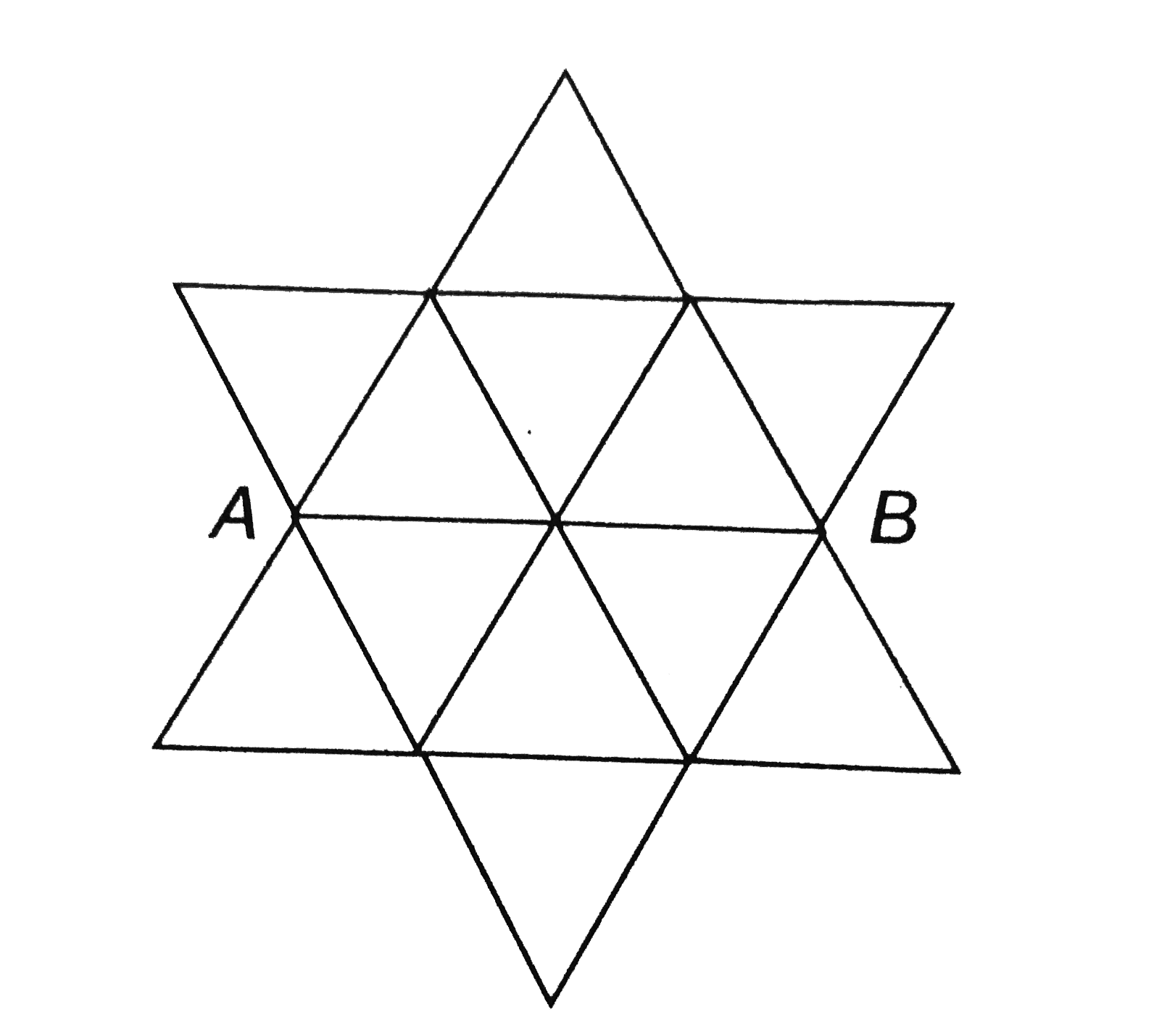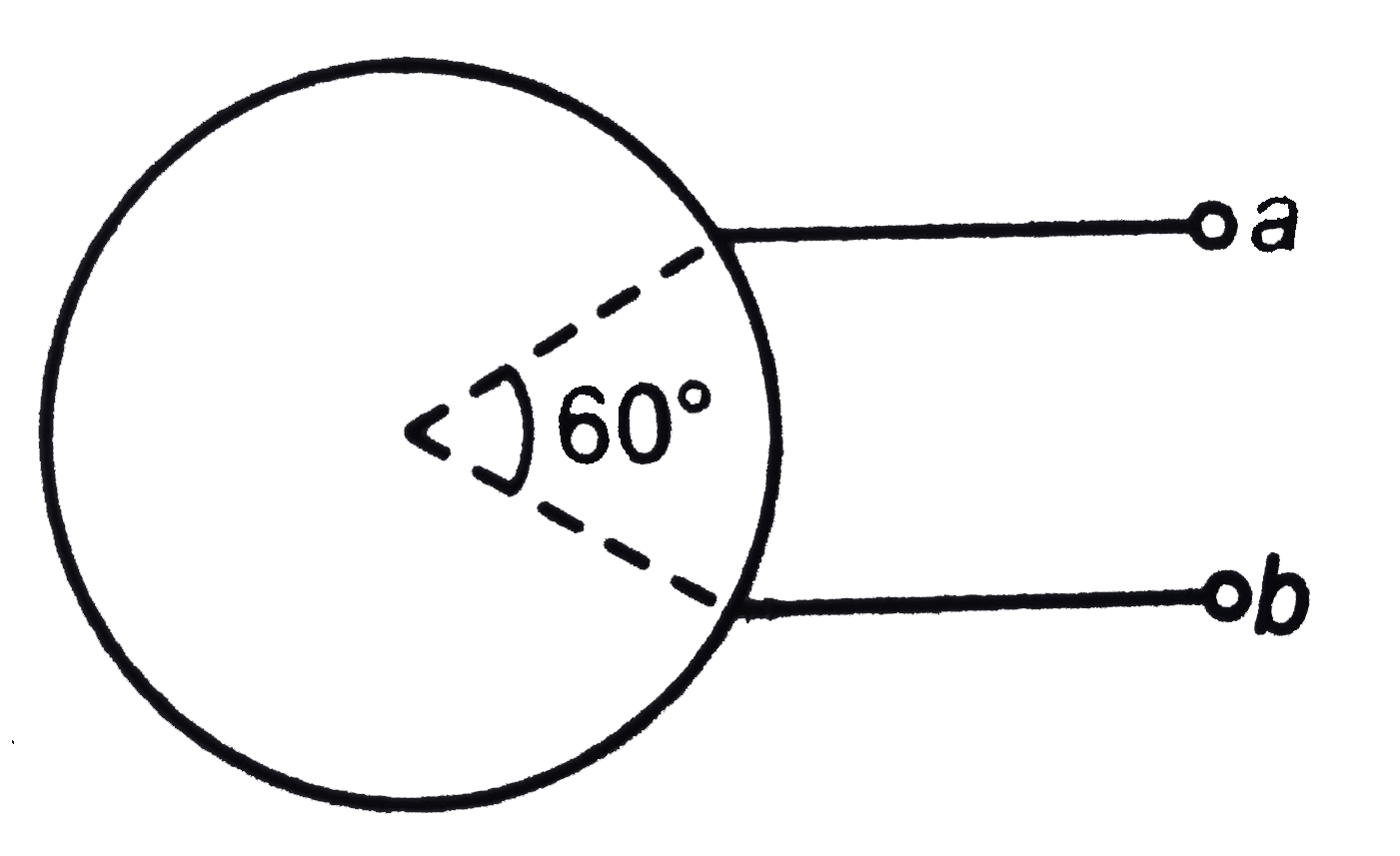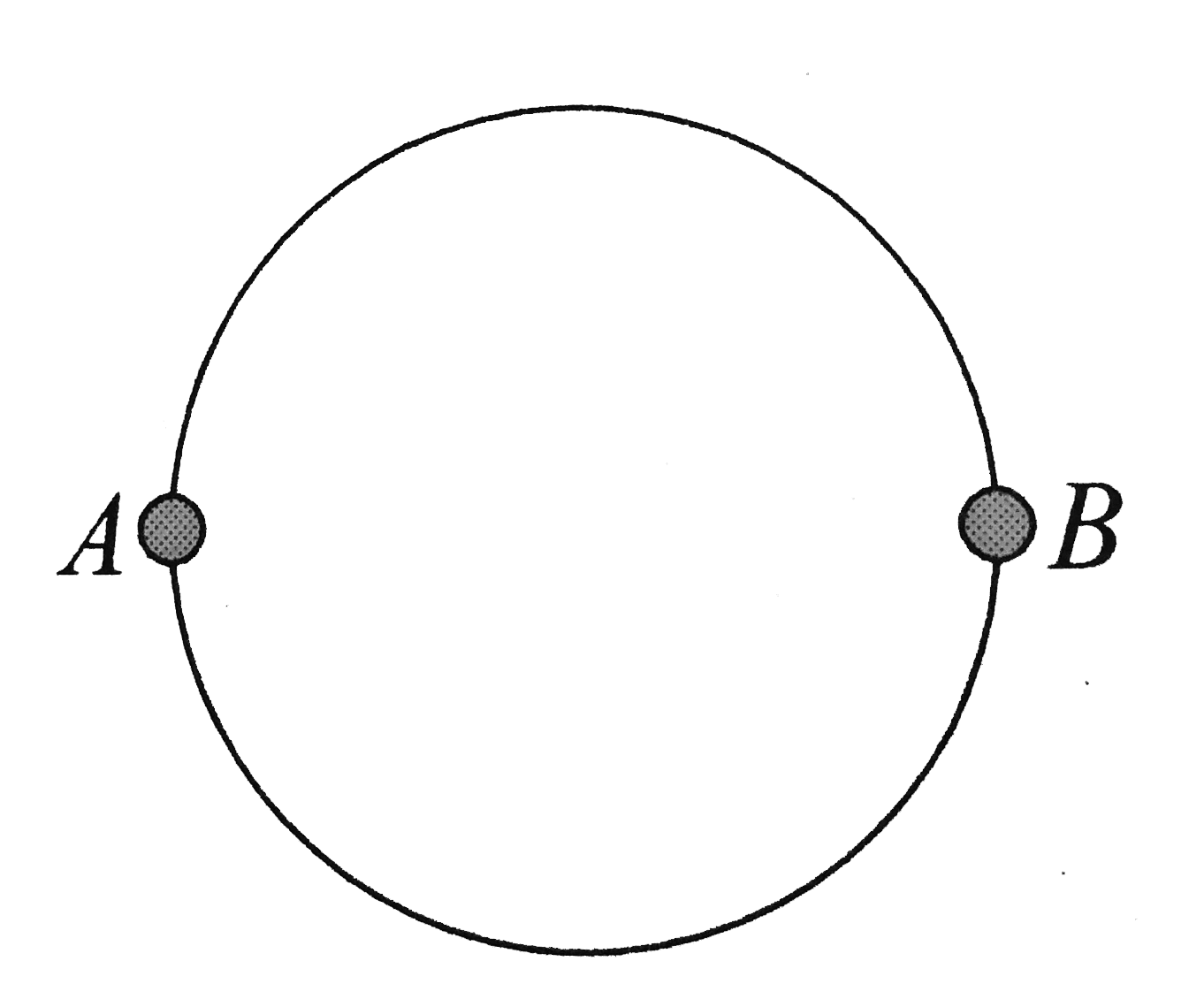Find the resistance between two diametrically' opposite points A and B of á wire of resistance 12Ωm−1 bent in form of a circle of radius 10 cm:
3Ω
0.6πΩ
0.3Ω
6πΩ
The correct Answer is:B
0.6πΩ
Total Resistance =12Ω×2π×10−1
=2.4π
Resistance of each half =1.2π
and as about diameter both parts are in parallel Req=1.2π2=0.6πΩ
Topper's Solved these Questions
- SAMPLE PAPER 7Book:EDUCART PUBLICATIONChapter:SAMPLE PAPER 7Exercise:SECTION-B
Explore 24 Videos
- SAMPLE PAPER 7Book:EDUCART PUBLICATIONChapter:SAMPLE PAPER 7Exercise:SECTION-C
Explore 6 Videos
- SAMPLE PAPER 6Book:EDUCART PUBLICATIONChapter:SAMPLE PAPER 6Exercise:Section-C
Explore 6 Videos
- SAMPLE PAPER 9 Book:EDUCART PUBLICATIONChapter:SAMPLE PAPER 9 Exercise:SECTION - C
Explore 3 Videos
Similar Questions
In the figure given below find the resistance between points A and B. Both the circle and the diatmeter are made of uniform wire of resistance rΩ per meter. The length AB is 2 metre.

View Solution(a) Justify the following statements
(i) Tungsten is used exclusively for filament by electric lamps
(ii) We do not use series arrangement for domestic circuits.
(b) A wire of resistance 8Ω is bent in the form of a closed circle. What is the effective resistance between two points A and B at the ends of any diameter of the circle ?
View Solution
Knowledge Check
Find the equivalent resistance of the circuit between points A and B shown in figure is (: each brach if of resistance 01Ω)
 A2225ΩB1225ΩC2235ΩD1235Ω
A2225ΩB1225ΩC2235ΩD1235ΩTo find the resistance of a gold bangle, two diametrically opposite points of the bangle are connected to the two terminals of the left gap of a metre bridge. A resistance of 4Ω is introduced in the right gap. What is the resistance of the bangle if the null point is at 20 cm from the left end ?
A2ΩB4ΩC8ΩD16ΩA uniform wire of resistance 18Ω is bent in the form of a circle. The effective resistance across the points a and b is
 A3ΩB2ΩC2.5ΩD6Ω
A3ΩB2ΩC2.5ΩD6Ω
A uniform wire of 16Ω resistance is made into the form of a square. Two opposite corners of square are connected by a wire of resistance 16Ω. The effective resistance between the other two opposite corners is
View SolutionA wire of resistance 1 Ω is elongated by 10%. The resistance of the elongated wire is
View SolutionA wire of resistance 12Ωm−1 is bent to from a complete circle of radius 10cm. The resistance between its two diametrically opposite points, A and B as shown in the figure, is

View SolutionA metallic wire of resistance 12Ω is bent to form a square. The resistance between two diagonal points would be
View SolutionA uniform wire of resistance 36Ω is bent in the form of a circle. The effective resistance across the points A and B is

View Solution